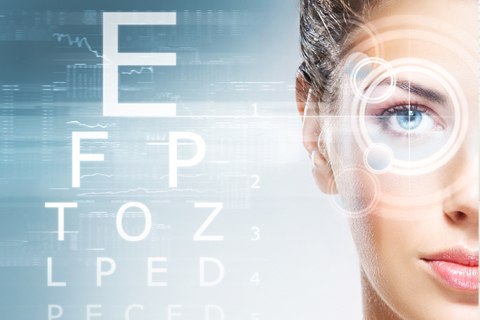Macular Degeneration
Did you know that macular degeneration is the number one cause of vision loss around the globe? This condition affects millions of people every year–approximately 10 million Americans suffer from this disease right now.
The Human Eye and Macular Degeneration
The retina is found on the inside of the back of your eye. This thin tissue is necessary for collecting light and visual images, and sending this information to the brain via the optic nerve. At the exact center of the retina lies the macula. The macula is critical for visual tasks such as reading, driving, and visualizing fine detail. Just as the name implies, macular degeneration is hallmarked by the gradual deterioration of the macula.

Signs and Symptoms of Macular Degeneration
Unfortunately, symptoms of macular degeneration often don’t appear until the disease has advanced significantly. This is why regular eye exams from our optometrist are critical, to increase your chance of early detection and treatment.
Over time, this disease can cause dark blurry vision or complete central vision loss, also known as “blind spots.” In more advanced disease stages, a person may be considered legally blind. Usually, peripheral vision remains intact for a person with macular degeneration, because only the center of a person’s retina is affected by the disease. While helpful, peripheral vision does not typically provide as much visual acuity as intact central vision, however.
Other specific signs of macular degeneration exist and depend on the exact type of the disease. Two main types exist: exudative (wet) and atrophic (dry). Most people with macular degeneration have the dry type. Signs of dry macular degeneration include dark blurry vision loss caused by the growth of small yellow deposits beneath the macula, which causes the macula to breakdown over time.
Wet macular degeneration is less common, and a key feature is that it tends to progress more quickly than dry type. Signs of wet macular degeneration include dark blurry vision loss caused by the proliferation of small, leaky blood vessels behind the retina, which lead to scarring and macular damage.
What is The Cause of Macular Degeneration?
The exact cause of this disease is not known. Researchers, scientists, and optometrists agree that it is probably caused by a combination factors, including environmental and heredity. Risk factors for macular degeneration may include: advancing age, obesity, smoking, light-colored irises, female gender, long-term exposure to blue light emissions (from digital devices), and long-term exposure to sunlight.
Macular Degeneration Prevention and Treatment at Valley Vision Eyecare
While not curable, macular degeneration is manageable with treatment. Options include nutrition counseling for dry type and laser and/or medication therapy for wet type. Our optometrists can also help you with prescriptive eyewear and other adaptations to help you cope with vision loss.
Prevention is the best defense against macular degeneration we can offer here at Valley Vision Eyecare, and that includes protecting the eye from high energy light exposure, including blue light and ultraviolet light. This involves wearing sunglasses as well as Blu Tech glasses, which filters and absorbs much of digital blue light and protects the eyes. Nutrition, including dark green leafy vegetables and omega-3 fatty acids (fish oil), are also excellent protectors. Regular, annual eye exams are also necessary to screen for early changes that are not detectable to the patient.
Valley Vision Eyecare has the experience and equipment necessary to diagnose and often treat macular degeneration, as well as many other eye diseases, at our office in Lebanon. For more information please schedule an appointment with your optometrist, and we’ll be in touch with you shortly.
